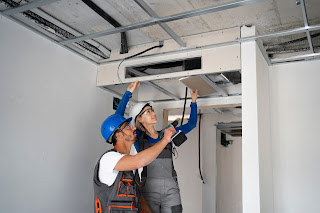Case Studies Successful Meeting Room Proposals
Meeting rooms play an important role in any organization as they facilitate collaboration and productivity. However, proposing new meeting room solutions can be challenging due to budget constraints and other competing priorities. This blog will examine three case studies of successful meeting room proposals through analyzing the key Components of an Effective Meeting Room Proposal that led to their approval. Each case study demonstrates how clearly presenting needs, measurable benefits, and return on investment can help secure buy-in for meeting room upgrades.
Case Study #1: Company A Expands Collaboration Space
Need
Company A had been rapidly growing but their existing meeting rooms were inadequate for supporting the collaborative work of their expanding teams. Conference rooms were constantly booked with no available slots and impromptu meeting spaces were limited. This impacted productivity and employee satisfaction.
Proposal
The proposal identified that lack of meeting space was a key roadblock for the company's growth plans. It outlined the Components of an Effective Meeting Room Proposal including:
Current state of meeting rooms and issues employees faced with limited availability
Employee survey results quantifying dissatisfaction with insufficient collaboration areas
Industry research on benefits of dedicated huddle spaces for focused work
Detailed floor plans and specs for 4 new huddle rooms of varying capacities
5 year ROI analysis factoring increased employee productivity and retention
Results
By clearly presenting measurable needs, potential benefits, and ROI timeframe, the proposal was approved. Two years on, the new huddle rooms have boosted collaboration and the company has achieved the projected productivity gains successfully facilitating its expansion plans.
Case Study #2: Startup B Expands with Venture Capital Funding
Need
Startup B had just secured Series A funding and needed to expand office space to accommodate a growing team. However, the majority of the budget needed to go towards hiring. Meeting room upgrades were a lower priority compared to other infrastructure needs.
Proposal
This proposal homed in on the Components of an Effective Meeting Room Proposal to secure approval:
It focused on how meeting rooms are integral to fostering innovation, the startup's core value
Research indicated new styles of meeting rooms strongly attract top talent the startup aimed to hire
Flexible modular furniture solutions meant a versatile space within budget that could grow with company
Incremental cost was shown to have high return through competitive advantages in hiring and ideation
Results
By zeroing in the importance of meeting rooms for culture and talent, the proposal succeeded in allocating a portion of funds. The new innovative space helped the startup recruit top engineers and data scientists, fueling its continued growth.
Case Study #3: Large Enterprise C Implements Agile Working
Need
Enterprise C employed thousands of people across multiple global offices but work was still organized traditionally. To increase speed of delivery, the company committed to Agile methodology requiring different workspace needs. Meeting room upgrades were essential to facilitate new ways of collaborative working.
Proposal
Research was conducted on the Components of an Effective Meeting Room Proposal for Agile teams which informed recommendations:
Workflow analysis showed inefficiencies of current large conference rooms
Case studies demonstrated benefits of varied informal meeting areas for different work modes
Component options like mobile whiteboards, modular furniture and telepresence focused on Agile practices
Rolling 5 year financials factored productivity gains, real estate optimization and cost savings
Results
The well-researched proposal aligned directly to the business priority of Agile transformation. It secured buy-in for a phased multi-site refresh. Survey feedback since shows improved employee engagement and faster delivery through supporting new collaborative workflows.
Conclusion
As these case studies demonstrate, meeting room proposals that highlight clear needs, measurable benefits aligned to organizational priorities, and potential return through quantifiable metrics like productivity, talent acquisition or cost savings are most likely to gain approval. Focusing proposals on business outcomes and return on investment while considering the Components of an Effective Meeting Room Proposal tailored to the company's specific requirements can help secure support for meeting room upgrades that improve collaboration and ultimately drive performance. With dedicated effort, meeting room proposals can deliver significant value to any organization.
Learn More:- https://avsyncstudio.wordpress.com/2023/10/03/components-of-an-effective-meeting-room-proposal/



Comments
Post a Comment